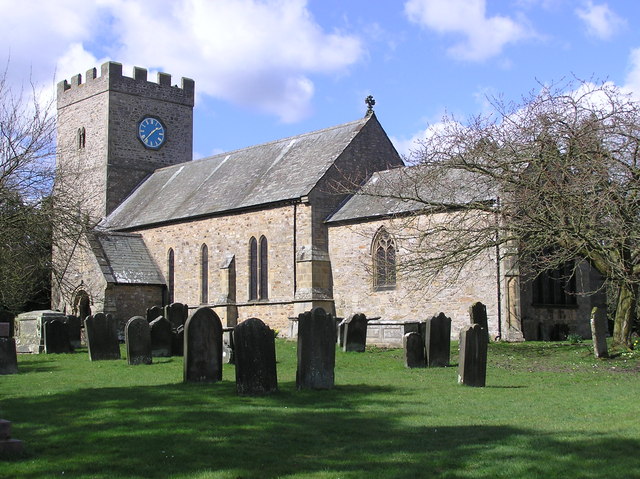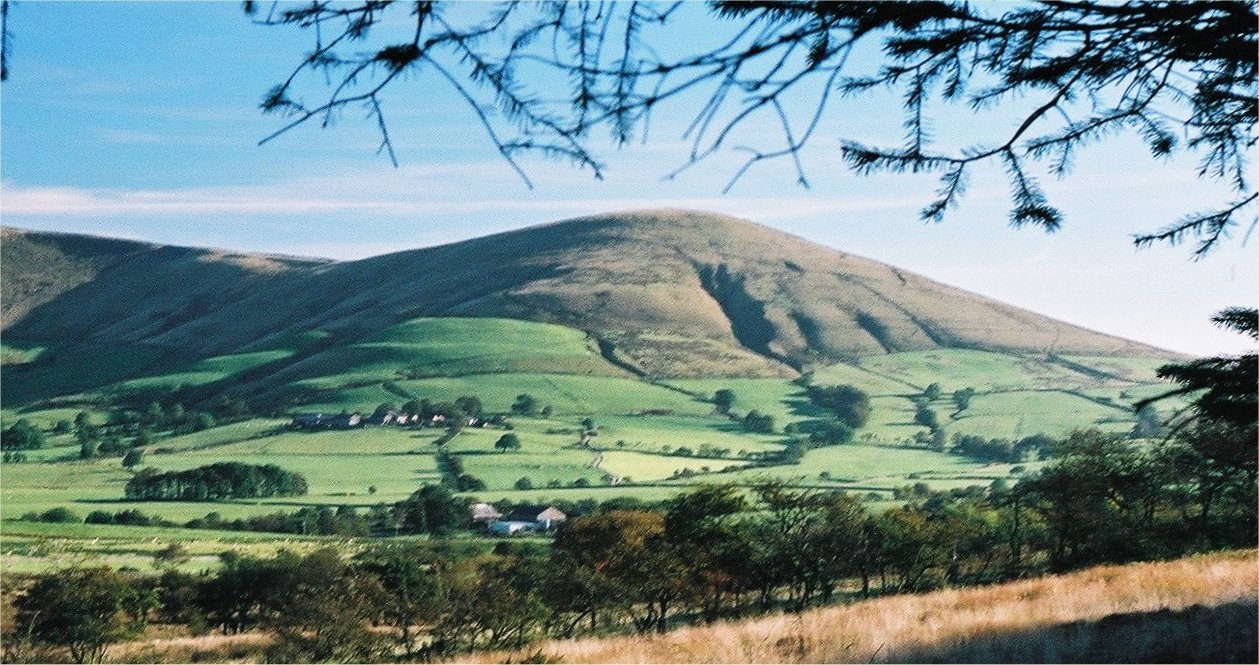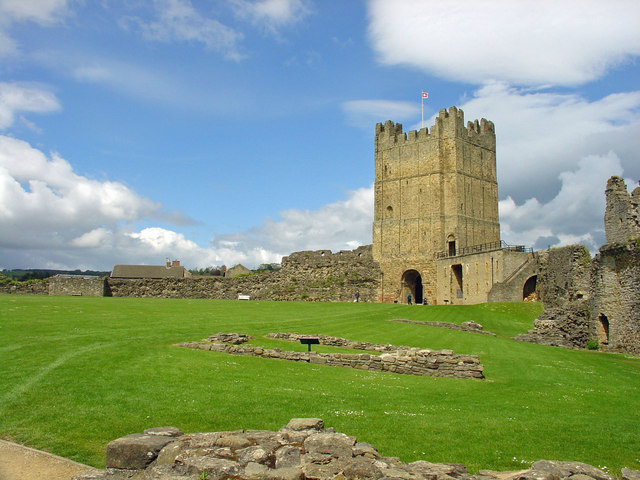|
Forcett
Forcett is a village in the Richmondshire district of North Yorkshire, England. It lies near the border with County Durham, on the B6274 road about 8 miles south of Staindrop. Nearby villages include Eppleby, Caldwell and Aldbrough. History The origin of the place-name is from the Old English words ''ford'' and ''set'' meaning fold by a ford and appears as ''Forset'' in the Domesday Book of 1086. In 1367, the manor was granted to Sir Walter Urswyk by John of Gaunt, Duke of Lancaster, Earl of Richmond, for Urswyk's valour at the Battle of Navarretta during the Hundred Years' War. Urswyk was later High Constable of Richmond Castle and Master Forester of the Forest of Bowland. Buildings St Cuthbert's Church is located in the centre of the village. On the edge of the village is Forcett Park in which stands Forcett Hall, a Palladian Palladian architecture is a European architectural style derived from the work of the Venetian architect Andrea Palladio (1508–1580). ... [...More Info...] [...Related Items...] OR: [Wikipedia] [Google] [Baidu] |
Forcett Hall
Forcett Hall is an English country house in the village of Forcett, North Yorkshire, England, some west of Darlington. It is a Grade I listed building. History Forcett had been in the possession of the Shuttleworth family of Gawthorpe Hall, Lancashire since 1582. Forcett Hall was originally an Elizabethan house, modified in 1710 by William Benson (architect), William Benson. After a fire in 1726 it was substantially redesigned in 1740 in the Palladian style by architect Daniel Garrett under Richard Shuttleworth, MP, vacating the family seat at Gawthorpe to move in. It passed to his son James Shuttleworth (politician), James, MP for Preston (UK Parliament constituency), Preston and Lancashire (UK Parliament constituency), Lancashire and High Sheriff of Yorkshire for 1760–61. James' son Robert inherited the property on his father's death in 1773 but sold it in 1784. His son Robert moved back to live at Gawthorpe. Robert, let Forcett Hall to Algernon Percy, 1st Earl of Bever ... [...More Info...] [...Related Items...] OR: [Wikipedia] [Google] [Baidu] |
Forcett Hall, Forcett Park (geograph 4463332)
Forcett is a village in the Richmondshire district of North Yorkshire, England. It lies near the border with County Durham, on the B6274 road about 8 miles south of Staindrop. Nearby villages include Eppleby, Caldwell, North Yorkshire, Caldwell and Aldbrough St John, Aldbrough. History The origin of the place-name is from the Old English words ''ford'' and ''set'' meaning fold by a ford and appears as ''Forset'' in the Domesday Book of 1086. In 1367, the manor was granted to Sir Walter Urswyk by John of Gaunt, Duke of Lancaster, Earl of Richmond, for Urswyk's valour at the Battle of Navarretta during the Hundred Years' War. Urswyk was later High Constable of Richmond Castle and Master Forester of the Forest of Bowland. Buildings St Cuthbert's Church is located in the centre of the village. On the edge of the village is Forcett Park in which stands Forcett Hall, a Palladian country house rebuilt in 1740. References External links [...More Info...] [...Related Items...] OR: [Wikipedia] [Google] [Baidu] |
Eppleby
Eppleby is a village and civil parish in the Richmondshire district of North Yorkshire, England. It is located about north of Richmond. According to the 2011 United Kingdom census, the population of the parish was 269. History Eppleby was mentioned in the Domesday Book in 1096 as being in the hundred of "Land of Count Alan" and the county of Yorkshire, the population was estimated at 0.9 households. In 1870–72 John Marius Wilson's ''Imperial Gazetteer of England and Wales'' described Eppleby as:"a township in Forcett parish, N. R. Yorkshire; on the N border of the county, 2½ miles N by E of Gainford r. station, and 9 N of Richmond. Acres, 1, 060. Real property, £1, 964. Pop., 245. Houses, 59. There is a Free Methodist chapel"The Methodist chapel was also mentioned in ''The London Gazette'', although little evidence of the building save for a group of houses named Chapel Row remains in the village. Evidence of the disused Forcett branch line of the Darlington and Barnard ... [...More Info...] [...Related Items...] OR: [Wikipedia] [Google] [Baidu] |
Aldbrough St John
Aldbrough St John is a village and civil parish (called just Aldbrough) in the Richmondshire district in North Yorkshire, England. The parish has a population of 325 (2001 census), increasing to 392 at the 2011 Census. History In the Norse language Aldbrough means "Old Burh" or fortified stronghold. The St John suffix was added to the name in the 1930s by the Post Office to avoid confusion with the Aldborough near Boroughbridge. At one time Aldbrough St John had a "small castle". We know this from John Leland's account in 1540 that "There appere great ruines of a howse or litle castel at Albruch village, and thereby rennith a bekke. It standith a 2 mile south from Perse Bridg on Tese". Perse Bridg is now called Piercebridge 2 miles north of Aldbrough referred to above as Albruch. The village is west of Darlington, north of Richmond and north of junction 56 on the A1(M) motorway. The road north from junction 56 of the A1(M) is part of Dere Street and runs up to Pierceb ... [...More Info...] [...Related Items...] OR: [Wikipedia] [Google] [Baidu] |
John Of Gaunt, Duke Of Lancaster
John of Gaunt, Duke of Lancaster (6 March 1340 – 3 February 1399) was an English royal prince, military leader, and statesman. He was the fourth son (third to survive infancy as William of Hatfield died shortly after birth) of King Edward III of England, and the father of King Henry IV. Due to Gaunt's royal origin, advantageous marriages, and some generous land grants, he was one of the richest men of his era, and was an influential figure during the reigns of both his father and his nephew, Richard II. As Duke of Lancaster, he is the founder of the royal House of Lancaster, whose members would ascend the throne after his death. His birthplace, Ghent in Flanders, then known in English as ''Gaunt'', was the origin of his name. When he became unpopular later in life, a scurrilous rumour circulated, along with lampoons, claiming that he was actually the son of a Ghent butcher. This rumour, which infuriated him, may have been inspired by the fact that Edward III had not been ... [...More Info...] [...Related Items...] OR: [Wikipedia] [Google] [Baidu] |
St Cuthberts Church Forcett
ST, St, or St. may refer to: Arts and entertainment * Stanza, in poetry * Suicidal Tendencies, an American heavy metal/hardcore punk band * Star Trek, a science-fiction media franchise * Summa Theologica, a compendium of Catholic philosophy and theology by St. Thomas Aquinas * St or St., abbreviation of "State", especially in the name of a college or university Businesses and organizations Transportation * Germania (airline) (IATA airline designator ST) * Maharashtra State Road Transport Corporation, abbreviated as State Transport * Sound Transit, Central Puget Sound Regional Transit Authority, Washington state, US * Springfield Terminal Railway (Vermont) (railroad reporting mark ST) * Suffolk County Transit, or Suffolk Transit, the bus system serving Suffolk County, New York Other businesses and organizations * Statstjänstemannaförbundet, or Swedish Union of Civil Servants, a trade union * The Secret Team, an alleged covert alliance between the CIA and American indust ... [...More Info...] [...Related Items...] OR: [Wikipedia] [Google] [Baidu] |
Palladian
Palladian architecture is a European architectural style derived from the work of the Venetian architect Andrea Palladio (1508–1580). What is today recognised as Palladian architecture evolved from his concepts of symmetry, perspective and the principles of formal classical architecture from ancient Greek and Roman traditions. In the 17th and 18th centuries, Palladio's interpretation of this classical architecture developed into the style known as Palladianism. Palladianism emerged in England in the early 17th century, led by Inigo Jones, whose Queen's House at Greenwich has been described as the first English Palladian building. Its development faltered at the onset of the English Civil War. After the Stuart Restoration, the architectural landscape was dominated by the more flamboyant English Baroque. Palladianism returned to fashion after a reaction against the Baroque in the early 18th century, fuelled by the publication of a number of architectural books, including Pal ... [...More Info...] [...Related Items...] OR: [Wikipedia] [Google] [Baidu] |
St Cuthbert
Cuthbert of Lindisfarne ( – 20 March 687) was an Anglo-Saxon saint of the early Northumbrian church in the Celtic tradition. He was a monk, bishop and hermit, associated with the monasteries of Melrose and Lindisfarne in the Kingdom of Northumbria, today in north-eastern England and south-eastern Scotland. Both during his life and after his death he became a popular medieval saint of Northern England, with a cult centred on his tomb at Durham Cathedral. Cuthbert is regarded as the patron saint of Northumbria. His feast days are 20 March (Catholic Church, Church of England, Eastern Orthodox Church, Episcopal Church) and 4 September (Church in Wales, Catholic Church). Cuthbert grew up in or around Lauderdale, near Old Melrose Abbey, a daughter-house of Lindisfarne, today in Scotland. He decided to become a monk after seeing a vision on the night in 651 that Aidan, the founder of Lindisfarne, died, but he seems to have experienced some period of military service beforehan ... [...More Info...] [...Related Items...] OR: [Wikipedia] [Google] [Baidu] |
Forest Of Bowland
The Forest of Bowland, also known as the Bowland Fells and formerly the Chase of Bowland, is an area of gritstone fells, deep valleys and peat moorland, mostly in north-east Lancashire, England, with a small part in North Yorkshire (however roughly half of the area falls into the area of the historic West Riding of Yorkshire). It is a western outlier of the Pennines. The Forest of Bowland was designated an Area of Outstanding Natural Beauty (AONB) in 1964. The AONB also includes a detached part known as the Forest of Pendle separated from the main part by the Ribble Valley, and anciently a royal forest with its own separate history. One of the best-known features of the area is Pendle Hill, which lies in Pendle Forest. There are more than 500 listed buildings and 18 scheduled monuments within the AONB. The Trough of Bowland is a pass connecting the valley of the Marshaw Wyre with that of Langden Brook, and dividing the upland core of Bowland into two main blocks. The hills ... [...More Info...] [...Related Items...] OR: [Wikipedia] [Google] [Baidu] |
Richmond Castle
Richmond Castle in Richmond, North Yorkshire, England, stands in a commanding position above the River Swale, close to the centre of the town of Richmond. It was originally called Riche Mount, 'the strong hill'. The castle was constructed by Alan Rufus from 1071 onwards following the Norman Conquest of England, and the ''Domesday Book'' of 1086 refers to 'a castlery' at Richmond. In the 12th century, his great-nephew Conan expanded the castle and built the keep. Although it was derelict by 1540, it was restored centuries later. The property is the best-preserved early Norman castle in England and an important tourist attraction. Layout Richmond Castle consists of four main parts: a triangular main enclosure, an outer enclosure to the east, a keep at the northern corner of the main enclosure, and a small enclosure around the keep. History In 1069 William the Conqueror had put down a rebellion at York which was followed by his "harrying of the North" – an act of ethnic clean ... [...More Info...] [...Related Items...] OR: [Wikipedia] [Google] [Baidu] |
Hundred Years' War
The Hundred Years' War (; 1337–1453) was a series of armed conflicts between the kingdoms of Kingdom of England, England and Kingdom of France, France during the Late Middle Ages. It originated from disputed claims to the French Crown, French throne between the English House of Plantagenet and the French royal House of Valois. Over time, the war grew into a broader power struggle involving factions from across Western Europe, fuelled by emerging nationalism on both sides. The Hundred Years' War was one of the most significant conflicts of the Middle Ages. For 116 years, interrupted by several Ceasefire, truces, five generations of kings from two rival Dynasty, dynasties fought for the throne of the dominant kingdom in Western Europe. The war's effect on European history was lasting. Both sides produced innovations in military technology and tactics, including professional standing armies and artillery, that permanently changed warfare in Europe; chivalry, which had reac ... [...More Info...] [...Related Items...] OR: [Wikipedia] [Google] [Baidu] |
United Kingdom Census 2011
A Census in the United Kingdom, census of the population of the United Kingdom is taken every ten years. The 2011 census was held in all countries of the UK on 27 March 2011. It was the first UK census which could be completed online via the Internet. The Office for National Statistics (ONS) is responsible for the census in England and Wales, the General Register Office for Scotland (GROS) is responsible for the census in Scotland, and the Northern Ireland Statistics and Research Agency (NISRA) is responsible for the census in Northern Ireland. The Office for National Statistics is the executive office of the UK Statistics Authority, a non-ministerial department formed in 2008 and which reports directly to Parliament. ONS is the UK Government's single largest statistical producer of independent statistics on the UK's economy and society, used to assist the planning and allocation of resources, policy-making and decision-making. ONS designs, manages and runs the census in England an ... [...More Info...] [...Related Items...] OR: [Wikipedia] [Google] [Baidu] |

.jpg)



